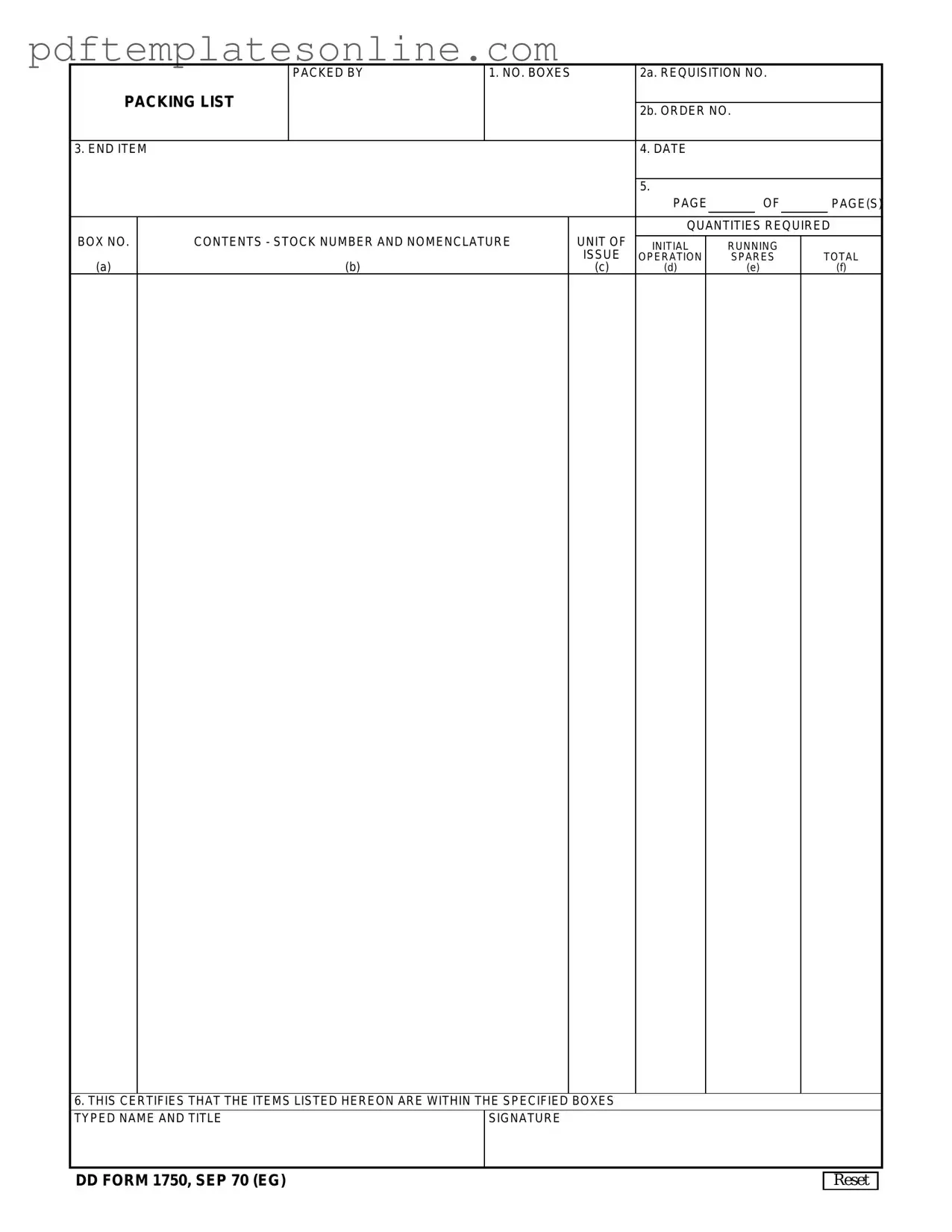Blank Dd 1750 Form
The DD Form 1750 is a packing list used by the U.S. Department of Defense to document the contents of a shipment. This form provides essential information about the items packed, including their stock numbers, quantities, and requisition numbers. It serves as a vital tool for ensuring accurate tracking and management of military supplies.
Access Dd 1750 Editor Now
